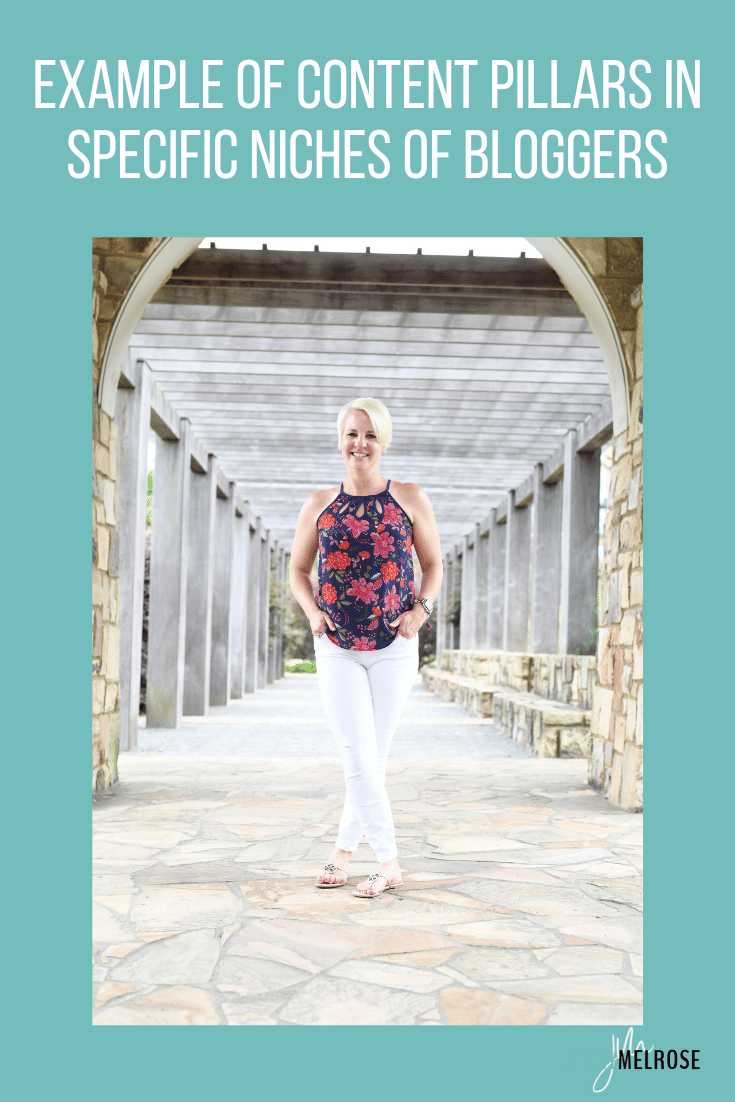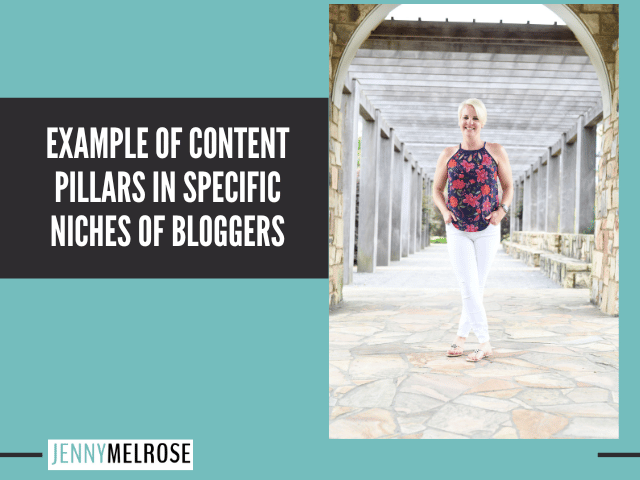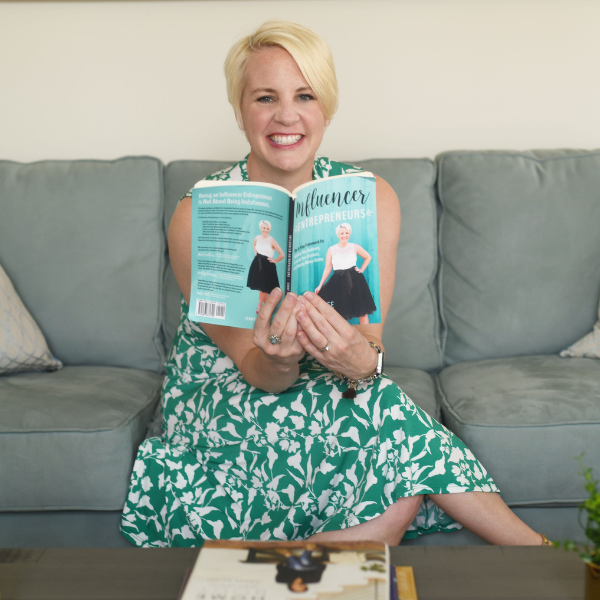Explore real-life examples of content pillars tailored to bloggers in niche markets.
IE 372: Example of Content Pillars in Specific Niches of Bloggers

It’s important that before you dive into the example of content pillars within specific niches that you understand what are content pillars and why are they importantso that you have a comprehensive understanding of how to use them.
It’s also important that you understand the different types of content pillars for you blog, as well as for email and social media marketing.
Example of Content Pillars in Blog Content
How to
If we’re looking at a food blogger that is trying to give me an A to Z explanation of how I can become more low carb because they have a nutrition aspect tied into what they do.
They are going to be able to show me exactly how I can start to put in different ingredients and teach me how to make better decisions about the food that I eat.
They’re going to provide me with recipes.
They’re going to show me the substitutions that I need.
They’re going to show me how to shop for low carb ingredients that are better for me.
They’re going to show me the shopping list that I need to have, and they’re going to talk about maybe different products that are better than others because one is more low carb than the other.
This would be a how to for a food blogger.
When we talked about the different types of content pillars I also gave an example of a DIYer, as well as a how to.
Guide
A guide is going to be something that is going to fully explain how we’re going to be able to do something.
Let’s say, for example, potty training. We all know as parents that potty training is not a how to.
It’s not step A all the way to step Z because there are lots of things that are going to happen in between and you’re going to have to determine what is the right fit for you.
So a guide may be a better content pillar for a parenting blogger that talks about potty training because they’re going to give you every aspect of potty training of what could go wrong, what could go right, what are some of the decisions that you need to make, what are the things that you need to have.
They’re going to give you that full guide that shows you potty training for your child.
What is
A what is is a full explanation of something.
It is going to give me exactly what I need to know in order to understand it and then implement it.
So as an example, a music blogger may go through and explain exactly what classical music is.
It’ll provide me with the history.
It’ll provide me with why things changed, what was important, who were the influences.
It’s going to provide me with information about what was the most important form or genre of music.
Resource
A resource for blog content could potentially be a list that is going to be linked within content that further explains each of those things.
A great resource could potentially be if you are talking about all the best hotels to use when traveling with your dogs and you are travelling specifically in the south.
That resource would give me not only a resource page where I’m going to have all the list of the hotels that are perfect to travel with my dog, but it’s also then going to provide me with articles that go even deeper into those hotels.
The reason for the articles specifically about the hotels is because it gives you an opportunity to explore niche aspect about the hotels.
For example, you may talk about one hotel because it’s within hiking distance to an area and your audience likes to hike with their dog.
Or maybe you’re someone that doesn’t hike, but you would prefer to do brewery tours with your dog and be able to stay in a hotel that is within distance to do that.
In a resource you are going to then have those articles coming off that main resource page that provides all the information.
It’s not a how to, it’s not a guide, it’s not a what is.
It is a resource that provides you with everything that has articles linked to it that go into more specifics.
Example of Content Pillars in Email & Social Media Content
Educational
In an educational piece of content, whether it’s email or social, I am going to try to teach them something.
I am then going to have a call to action that sends them to it.
For example, if I’m trying to as a food blogger teach them that the best time of year to buy their squash is In September then we’re going to create the email marketing that goes along with that for social media because we have a blog post about a recipe that uses the squash so it’s perfect for September.
Let’s just say that that’s the time of year. So that’s going to be the educational piece and then the call to action is go grab the recipe.
Inspirational
As a craft blogger when you’re creating inspirational content, you are trying to inspire them to make what you made.
The email or social media may show them an ornament that has been handed down generation after generation.
In your content you’re going to share the story behind the ornament and then memories it reminds you of, in order to inspire your audience to want to make the ornament with their family.
You will then have a call to action that sends them to the blog post that shows them how to make the ornament.
The purpose behind inspiring your audience with a story is to emotionally connect with them and then have them want to do or make what you did.
Entertaining
The entertainment has to be connected to the call to action to go to your blog post or buy your thing.
I do not want to see a food blogger doing a viral Tik Tok dance about making your husband pick up the laundry.
That is the dumbest thing you could possibly do.
You’re gonna go potentially viral because it’s already something that’s going viral, and you’re going to gain people that are not interested in recipes.
They just thought you were funny about talking about your husband. So connect the entertainment to what you are doing.
This is especially going to work well when it comes to Reels and TikTok because you don’t want to simply talk straight to the camera.
Potentially you want to be able to do some of the flashes in and out of catching their attention with the cuts that you make.
That’s where the entertainment piece is going to come in.
Just make sure that you tie it to your content of what you are trying to send them to for the call to action.
Advocacy
Advocacy comes in when you advocate for a specific cause that you believe in like body image, loss, or Autism.
This is especially easy to do if the cause has a specific month where they advocate for it regularly.
It’s probably something that you’ve already brought into your content or talked about on your platforms.
For example, as a food blogger you might have had a sister that went through loss and it’s something that’s really important to you.
Maybe you talked about it in one of your recipes that you were creating because you were trying to create something that was a comforting recipe for your sister at that time.
That’s where you would then connect it and be able to tie in advocacy and then have that call to action for it and being able to help.
Some of you may actually advocate in your content, my parenting bloggers, my bloggers that talk about loss, and maybe those that talk about divorce and marriage and all of those issues that are things that are causes, but also may educate because you may naturally find advocacy is easier.
Not everyone is going to be able to use this pillar of content as part of their marketing because it may not be something that you’ve connected within your content and that’s fine.
Promotional
The last pillar of content pillar in email and social media marketing is going to be promotional.
If you’re doing email marketing, you’re doing that promotional sales sequence that we really have broken down when we talked about the sales funnel.
When you’re doing the promotion, you still want to be able to make sure that you are hitting on the pain points that your product or service is going to solve for them.
And that’s where you then would have that call to action.
So when you are looking at doing this promotional content pillar for email and social media, you’re able to focus on the pain point that you solve and how you solve it.
And this can be done whether you were talking about a cookbook or whether you are talking about a course that teaches them how to create a backdrop for photography, whatever it is.
Your promotion should always make sure that it’s in that promotional sequence of hitting on the pain points, really tying it back, being able to show how other students have had success, and be able to answer any questions that they have.
If you are someone who has listened to this episode and said, I really want to dig deeper into understanding my content and how I can better serve my audience, then I would highly recommend that you join the insiders group.
ACTION ITEMS
- If you liked this episode of Influencer Entrepreneurs, please subscribe and leave a fabulous review!
- Ready to go deeper into your business? Join the Insiders Group at the special rate for podcast listeners.


